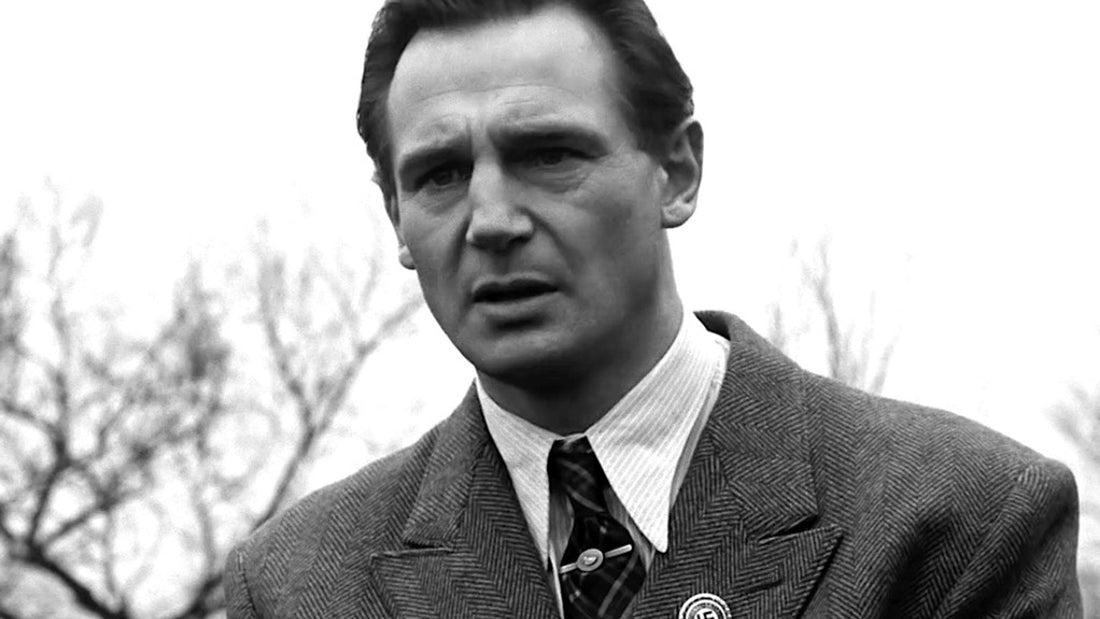The year marks the 30th anniversary of Steven Spielberg’s film Schindler’s List. His three-hour film tells the compelling story of Oskar Schindler, a German industrialist who resisted the Nazi Party by employing Jews incarcerated in concentration camps in his enamelware and ammunition factories. On December 15, 1993, the release date of Schindler’s List, the film gained critical acclaim, receiving twelve Oscar nominations. At the 66th Academy Awards, the film went on to win seven of their twelve nominations. Notably, Spielberg took home his first Oscar, earning the prize for Best Director. Despite the global recognition Schindler’s List received, it is the film’s grayscale cinematography that makes it the poignant, historical, and grim narrative that continues to captivate audiences today. In fact, Spielberg took the unique and creative directorial approach of filming Schindler’s List in black and white. So, viewers have always wondered and asked, what story is Spielberg trying to tell?

Prior to Schindler’s List, Spielberg was already a critically acclaimed director. He had completed commercially triumphant projects such as Jaws (1972), Raiders of the Lost Ark (1981), E.T: the Extra-Terrestrial (1982), and Jurassic Park (1993). However, all those projects were filmed in color, varying across the thriller, adventure, and science fiction genres. Schindler’s List is a marked departure from his previous work—the film being an epic drama covering a historical atrocity. Due to the Holocaust being a new topic in film for him to explore, Spielberg wanted to accurately reflect and portray the cinematography of World War II. The black and white cinematography gave the film a documentary-like feel. Spielberg’s goal with this approach was “to create a sense of historical and emotional authenticity.” Before Schindler’s List, the most well-known Holocaust story depicted in cinema was that of Anne Frank. In 1959, fourteen years after the Holocaust ended, director George Stevens released the Oscar-nominated film The Diary of Anne Frank. Like Schindler’s List, Stevens filmed the movie in black in white.

Spielberg elevates color by focusing on a little girl in a bright red coat serving as the only source of color within the film. Her first appearance is in the film's iconic liquidation scene, in which Jews are being murdered and transported to Auschwitz. Schindler watches the massacre from above on horseback. Spielberg provides a headshot of Schindler’s utter disgust before shifting the camera into a shot from Schindler’s point of view. The audience sees what Schindler sees—the little girl in the red coat juxtaposed with the horrors of genocide.

George Victory, a writer for filmotopia.info, wrote, “Spielberg overwhelms the audience with devices that convey the chaos and confusion because what is ensuing has no explanation for it. As the girl hides under the bed the red on the coat is no more. She now joins every other victim of the massacre as a statistic.” The little girl joined the ranks of the massacred—the next time she appears on screen, Schindler sees her lifeless body. She’s still wearing her coat, which regains its bright red hue as a cartwheels her corpse away, to join the other bodies. The red in her coat now symbolizes blood. The blood of the Jews. The blood of those who’d been massacred in the name of hate and discrimination. Speilberg’s symbolism evokes the historical representation of Jewish bloodshed in cinema - exemplified in Cecil B. DeMillie’s The Ten Commandments (1956), which poignantly depicts blood gushing from Moses’s staff. In Spielberg’s film, this is the pivotal moment when Schindler realizes he holds the fate of the Jews in his hands. He understood that he must do something, and he did—hiring numerous Jewish men, women, and children to work in his enamelware and ammunition factories, saving 1,200 lives in the process.

Thirty years ago, Spielberg created an authentic film of emotion, history, and violence. A film that is still watched, honored, and celebrated todayAs a filmmaker and storyteller, he wanted to immerse his viewers into an untold, unheralded story set amidst one of the world’s most horrific atrocities. Moreover, his directorial approach of shooting the film in black and white added to the mood and captured the somber tone of the time. Since Schindler’s List, Spielberg has made many more films, earning another Oscar for Best Director, grossing more than “$10 billion worldwide, making him the highest-grossing director in cinematic history.” Nevertheless, nothing will be as moving and impactful as Schindler’s List.
©ArtRKL™️ LLC 2021-2023. All rights reserved. This material may not be published, broadcast, rewritten or redistributed. ArtRKL™️ and its underscore design indicate trademarks of ArtRKL™️ LLC and its subsidiaries.





